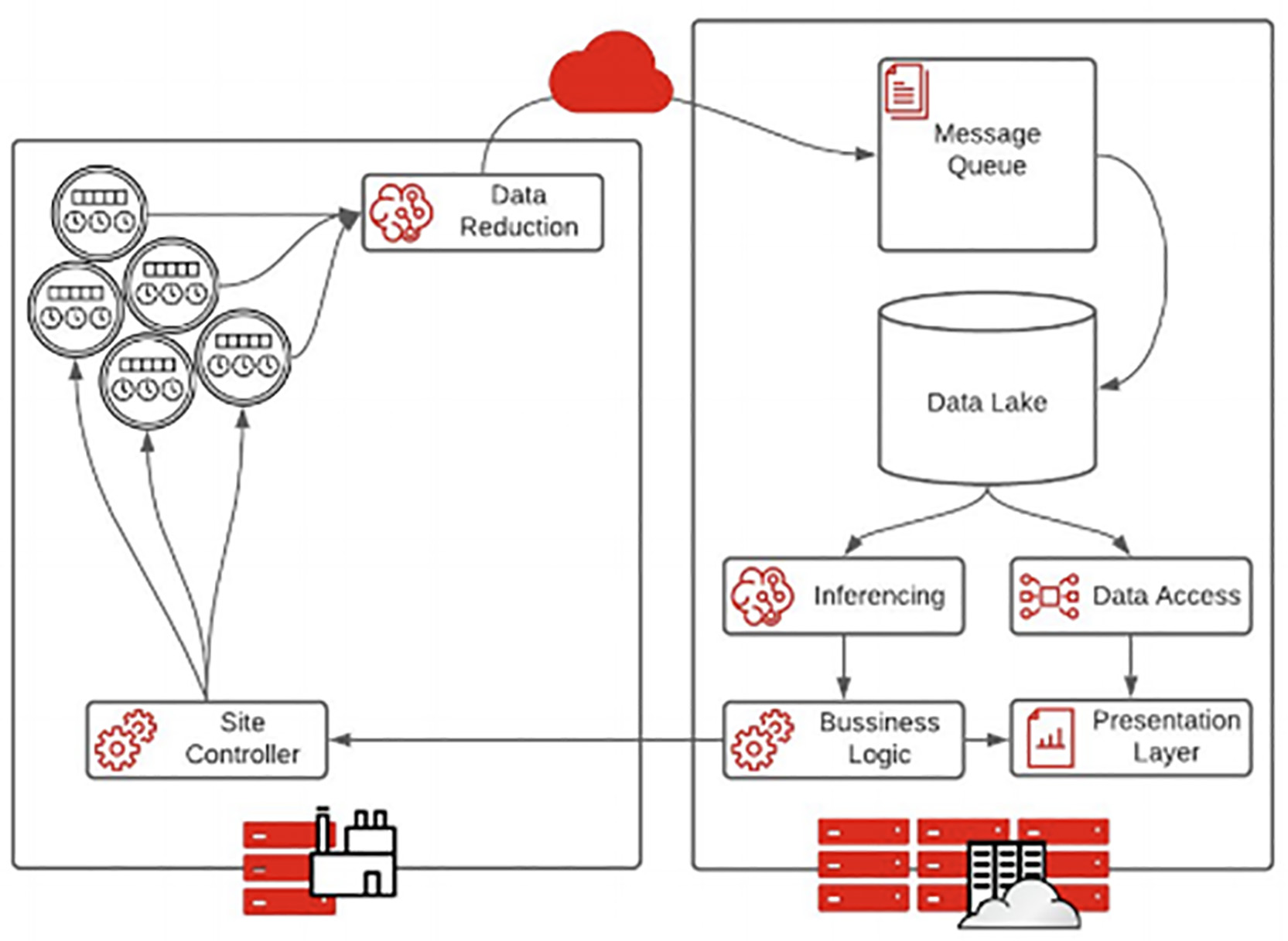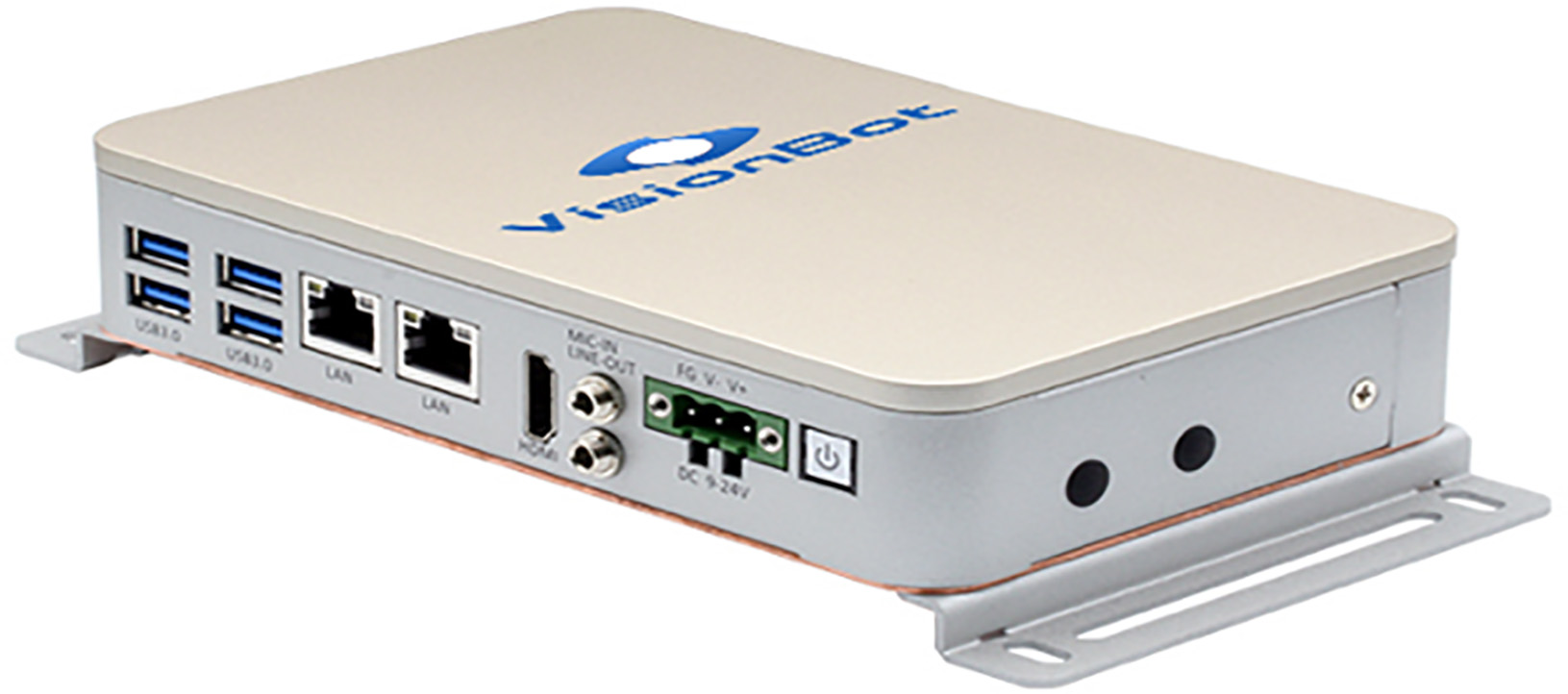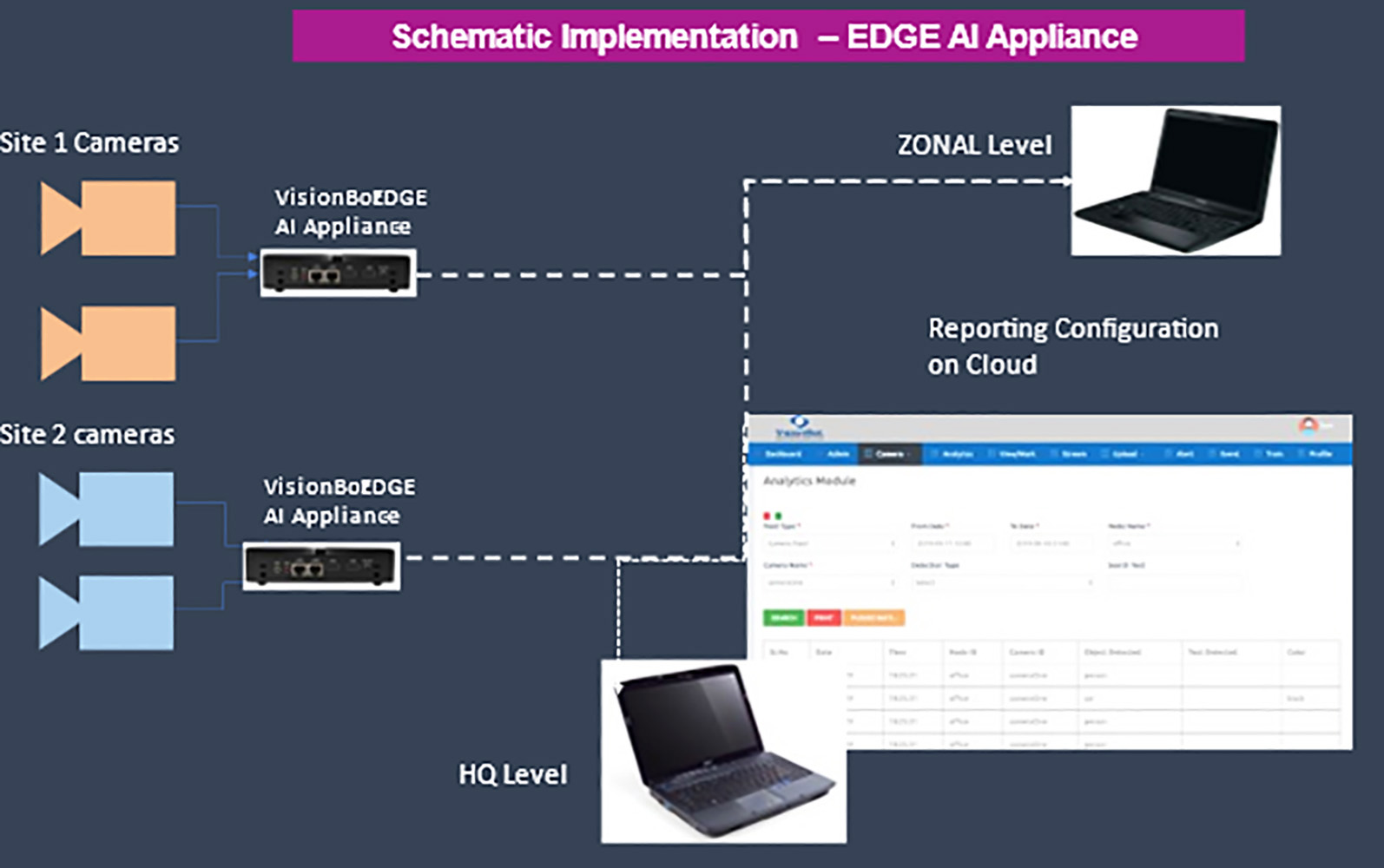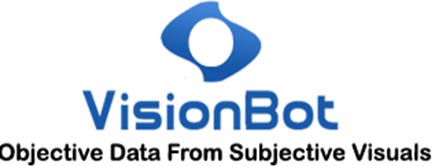Visionbot™ – the pioneer in Cloud AI to launch its appliance for EDGE AI
The Importance of Automated Visual Monitoring with Edge AI and Cloud Reporting for Enterprise Analysis

Prakash Prabhu – Chief Business Officer & Co-Founder, VisionBot
1.1 What is Edge AI?
Edge AI is the deployment of AI applications in devices throughout the physical world. It’s called ‘edge AI’ because the AI computation is done near the user at the edge of the network, close to where the data is located, rather than centrally in a cloud.
Advances in edge AI have opened opportunities for machines and devices, wherever they may be, to operate with the ‘intelligence’ of human cognition. AI-enabled smart applications learn to perform similar tasks under different circumstances, much like real life.
The efficacy of deploying AI models at the edge arises from three recent innovations.
- Maturation of neural computing: Neural networks and related AI infrastructure have finally developed to the point of allowing for generalized machine learning. Availability of no of trained datasets for computer vision.
- Advances in compute infrastructure: Powerful distributed computational power is required to run AI at the edge. VisionBot edge application can be on CPU, GPU or CPU+GPU.
- Adoption of IoT devices: The widespread adoption of the Internet of Everything has fuelled the explosion of big data. With the sudden ability to collect data in every aspect of a business – from industrial sensors, smart cameras, automation systems and more – we now have the data and devices necessary to deploy AI models at the edge.

1.2 Why deploy AI at the Edge?
What are the benefits of Edge AI?
Edge AI represents a paradigm shift in the way visual monitoring is implemented. It involves the deployment of AI algorithms and models directly on edge devices, such as cameras, sensors, or gateways, allowing data analysis to be performed locally without relying solely on cloud infrastructure. This local analysis brings several significant advantages.
Since AI algorithms are capable of understanding video, sounds, and other sensor inputs which are forms of unstructured information. These AI applications would be challenging or even impossible to deploy in a centralized cloud or enterprise data center due to issues related to latency, bandwidth and privacy.
1.3 What are the benefits of Edge AI & Cloud Reporting?
The benefits of edge AI include:
- Localized Intelligence: AI applications are more powerful and flexible than conventional applications.
- Real-time Insights: Since edge technology analyzes data locally rather than in a faraway cloud delayed by long-distance communications, it responds to users’ needs in real time.
- Reduced Cost: By bringing processing power closer to the edge, applications need less internet bandwidth, greatly reducing networking costs.
- Increased Privacy: Edge AI further enhances privacy by containing that data locally, uploading only the analysis and insights to the cloud. Even if some of the data is uploaded for training purposes, it can be anonymized to protect user identities. By preserving privacy, edge AI simplifies the challenges associated with data regulatory compliance.
- High Availability: Decentralization and offline capabilities make edge AI more robust since internet access is not required for processing data. This results in higher availability and reliability for mission-critical, production-grade AI applications.
- Persistent Improvement: AI models grow increasingly accurate as they train on more data. When an edge AI application confronts data that it cannot accurately or confidently process, it typically uploads it so that the AI can retrain and learn from it.
- Reduced Latency: By processing visual data at the edge, near the source of its generation, edge AI minimizes latency, ensuring real-time insights and prompt action. This is particularly critical for time-sensitive applications, such as security monitoring, where immediate responses are crucial to prevent potential risks or threats.
- Bandwidth Optimization: Transmitting large volumes of visual data to the cloud for analysis can strain network bandwidth and result in increased costs. Edge AI reduces the amount of data that needs to be transmitted by performing initial analysis locally and sending only relevant information to the cloud. This optimization of bandwidth allows for cost-effective and efficient data transmission.
- Cloud Reporting for Enterprise Access: While local analysis provides immediate insights and enables real-time decision-making, cloud reporting complements edge AI by providing comprehensive and centralized access to visual monitoring data.
- Centralized Data Management: Cloud reporting allows enterprises to store, manage, and analyze visual monitoring data from multiple edge devices in a centralized manner. This centralized approach facilitates holistic analysis, cross-device comparisons, and long-term.
- Scalability and Flexibility: Cloud-based platforms provide the scalability required to accommodate growing datasets and increasing demand for visual monitoring. Enterprises can easily expand their infrastructure and adapt to evolving needs without the limitations of on-premises solutions. Cloud reporting also enables remote access, empowering stakeholders to monitor operations and make informed decisions from anywhere at any time.
- Advanced Analytics and AI: Cloud reporting platforms often integrate advanced analytics and AI capabilities, enabling enterprises to leverage powerful algorithms and models for deeper insights and predictive analytics. By combining local edge AI analysis with cloud-based AI, organizations can unlock the full potential of visual monitoring, identifying patterns, anomalies, and optimizing processes with a higher degree of accuracy.
Real-World Applications and Benefits:
- Manufacturing: Edge AI allows real-time monitoring of production lines, detecting faults or anomalies immediately, reducing downtime, and enhancing overall productivity.
- Retail: Visual monitoring combined with edge AI can improve inventory management, prevent theft, analyze customer behavior, and optimize store layouts, leading to enhanced customer experiences and increased sales.
- Healthcare: Edge AI enables real-time analysis of patient vital signs, monitoring equipment functionality, and detecting potential risks, facilitating prompt interventions and ensuring better patient outcomes.
- Transportation: Edge AI-powered visual monitoring enhances safety and security in transportation systems by detecting traffic violations, monitoring infrastructure integrity, and identifying potential risks, thereby reducing accidents and improving efficiency.
Conclusion
The importance of edge AI for automated visual monitoring using local analysis and cloud reporting cannot be overstated. It empowers enterprises to leverage the power of AI for real-time insights and decision-making while addressing the challenges of latency, bandwidth, privacy, and security. By combining the benefits of local analysis at the edge with centralized cloud reporting, organizations can optimize their operations, enhance efficiency, and unlock new opportunities for innovation across various industries. As enterprises continue to embrace the transformative potential of edge AI, automated visual monitoring will become an essential component of their strategies for success in the digital era.

VisionBot EDGE AI Appliance: Can be deployed for AI analysis of 4/8/16 local video streams.
Although we have a full suite of AI application on VisionBot cloud, we intend to support the below AI analysis on the edge appliance.
- Gender.
- Age.
- Helmet/ mask.
- Protective kit.
- Tripwire.
- Count & congestion analysis.
- Vehicle classification.
- Custom object detection.
- Directional/ dwell analysis.
- Object removal.
- Object insertion.

Schematic for EDGE AI implementation:
Connect with our experts to understand how companies are using VisionBot AI driven Computer Vision to strengthen security, safety and streamline operations. https://visionbot.com/contactus.
Become a VisionBot™ channel partner, and discover the opportunity to offer a cutting-edge AI-powered computer vision solution to your customers. https://visionbot.com/partnering.
